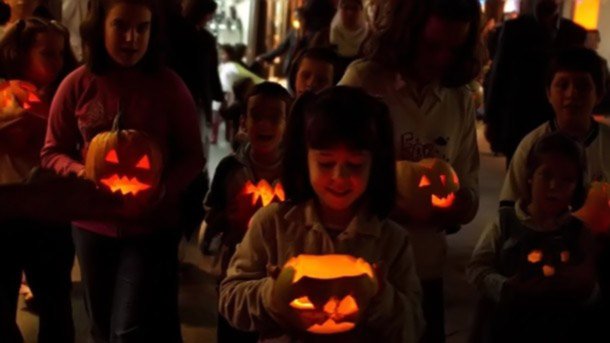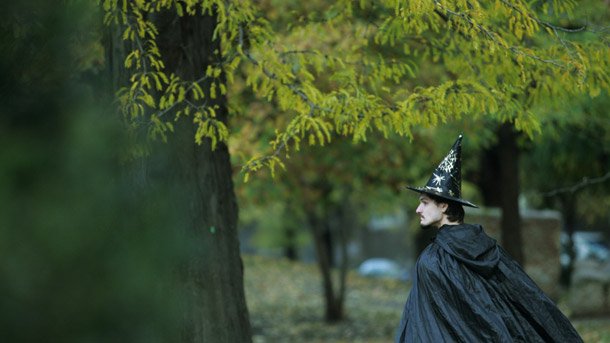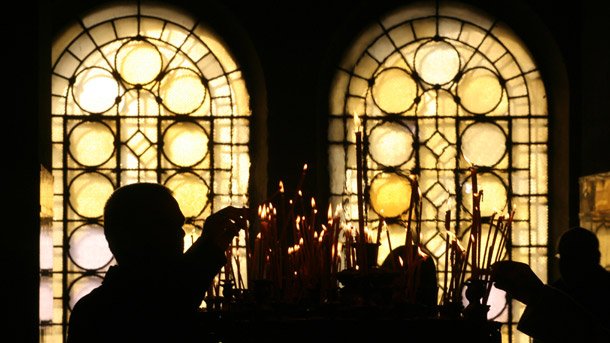
Lanterns made of carved pumpkins, ominous masks, sweets for the youngest kids, and scary ghost stories – these are the most popular images that come to mind when one thinks of All Saints Day, more popular today as Halloween.
The origins of this feast can be traced back to the ancient celebrations of the Celtic New Year, which started on the first day of November. Ancient Celtic tribes believed that the doors to the world beyond opened in this night so they clothed in special garments and put masks on their faces to chase the evil spirits away. In the 8th century, in an effort to emancipate people from the shackles of pagan beliefs and the fear of demons, the Catholic Church proclaimed November 1 as the Day of All Saints. The idea was to make the new feast overlap with the pagan holiday and gradually overtake its meaning. Until then, the Day of All Saints was a moveable feast marked by all Christians on the first Sunday after Pentecost in the early summer. Two centuries later, the Catholic Church declared November 2 as the Day of the Dead, or All Souls Day. Although Christianity penetrated the British Isles, many people there continued chasing spirits and witches on the eve of All Saints Day.

Over time, these three separate feasts merged into one – the so-called Halloween. The euphoria and exultation surrounding Halloween reached its peak in the 20th century, with the commercialization of the holiday in the United States, the UK, and the Netherlands. The holiday is popular mainly with children who dress in costumes resembling skeletons, vampires, and witches, and go round houses for a trick-and-treat.
The Catholic Church warns that Halloween can direct people to the bad and dark side of life. In order to keep the distinction between the two Christian feasts, namely the All Saints Day and All Souls Day, some Catholic priests have resumed the practice of the vespers and evening mass on the eve of the feast. They have revived the old tradition of having the congregation take part in a nighttime procession with burning candles, interpreted as a symbol of the link of devout Christians to the bright and sacred world of the Resurrected Savior Jesus Christ.
For several years now, Halloween has found more and more followers in Bulgaria. Just like children and adolescents of the same age in the UK and the USA, many Bulgarian young people go out in the streets, dressed as witches and demons looking for scary adventures. As priest Nikanor from the Giginski Monastery in Bulgaria told Radio Bulgaria, young people perceive this feast as no more than a secular entertaining event:
“It has all turned into a masquerade. In Bulgaria, this feast is not popular as All Saints Day but as Halloween. The pumpkin lanterns are devoid of any Christian meaning whatsoever. The Day of All Saints is traditionally a feast dedicated to the veneration of those people through whose acts the divine blessing descends on earth. In their lives, they have set an example of virtuousness and piousness. These are the Holy Apostles, prophets, martyrs, and ascetics. These people have been gifts of God to us. By venerating them on a particular day of the year, we celebrate the redemption and salvation of mankind that Jesus Christ perpetrated. These holy people have been among us since the dawn of humanity. And they are here today as well, because without them, there would be the Apocalypse on earth”, priest Nikanor argues.

Along with the All Saints Day that is traditionally celebrated in the entire Christian Orthodox world on the first Sunday after Pentecost, the Bulgarian Orthodox Church has designated another similar feast – the Sunday of All Bulgarian Saints marked on the second Sunday after Pentecost. This is the newest movable feast in the Bulgarian Church calendar, paying homage to all historical personalities who lived on Bulgarian lands and have been canonized as saints. Bulgarian saints have a special significance for the Bulgarian people as protectors and patrons of Christian faith and virtues. As priest Nikanor says, the observation of Christian traditions and beliefs is of utmost importance only when driven by true spirituality:
“The most important thing is the life in Christ. Church traditions are a reincarnation of both the life of the soul and of the body. The human personality is composed of a spiritual and physical essence that both participate in prayer. Redemption is granted to both the soul and the body because both are saved and resurrected. That is why traditions accompany the spiritual life and are meaningful only when they express it. It is something much more serious than what we perceive. In this regard, the mere copying of such feasts as Halloween makes us feel the non-Christian world hidden behind them even though it takes the form of games and masquerades. When people are not well protected by the divine blessing, they become vulnerable and fall easy pray to dangerous influences”, priest Nikanor from the Giginski monastery in Bulgaria told Radio Bulgaria.
Translated by: Rossitsa Petcova
По публикацията работи: Darina Grigorova
Последвайте ни и в
Google News Showcase, за да научите най-важното от деня!

